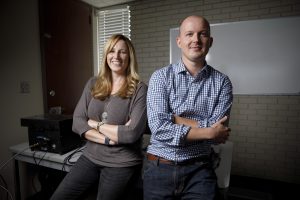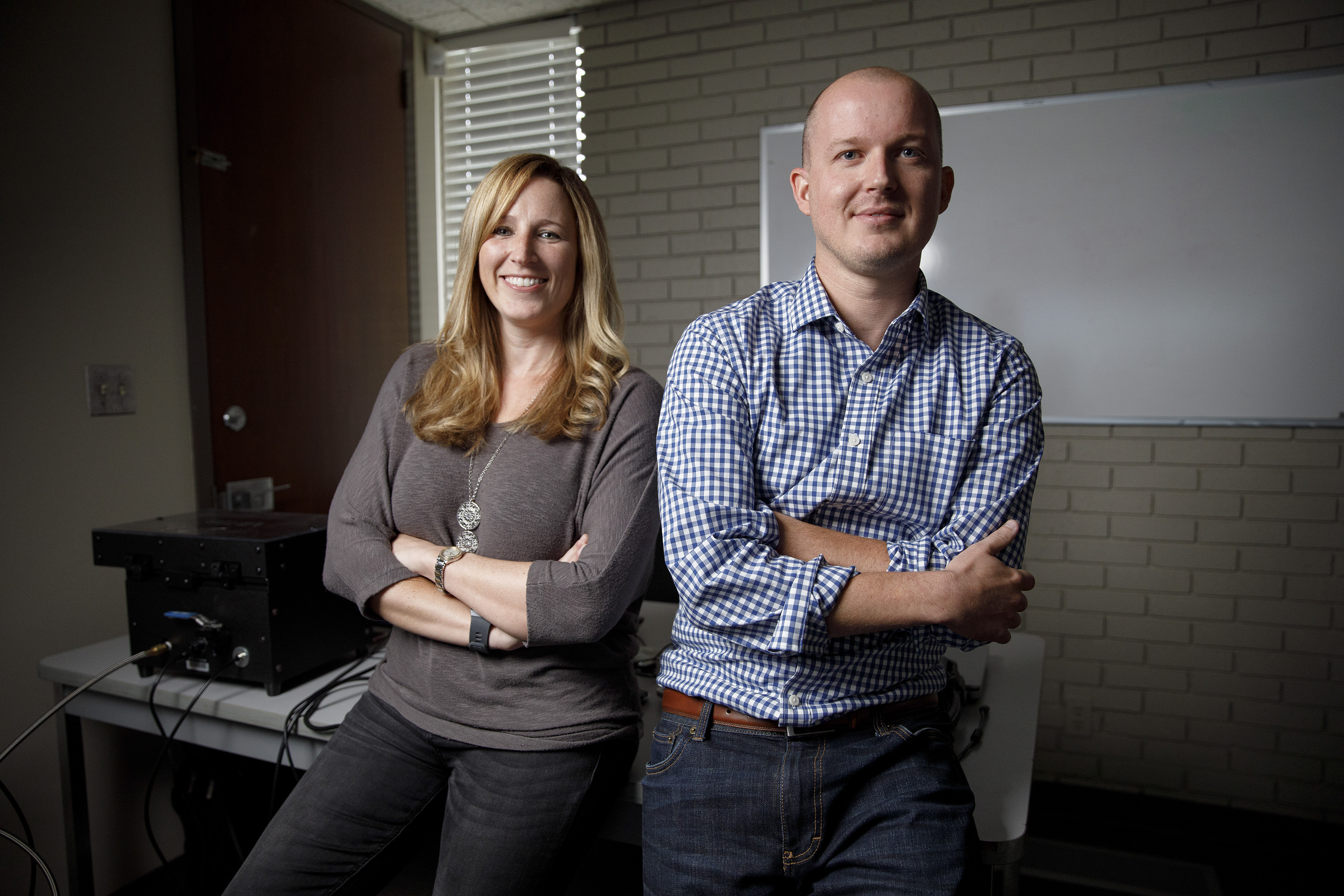Cook, Dolliver expand behavioral, criminological focus
By David Miller

In 2017, University of Alabama researchers began studying responses and brain activity of law enforcement officers in virtual “shoot/don’t shoot” situations. Their goal was to address incidents of the officers’ use of force by using neural data to help improve police training and officer selection.
Their sample size yielded promising results. For instance, electroencephalogram findings showed officers activated more of the beta brain wave – often associated with thinking – in these situations. However, their sample size was limited to just four participants due to funding constraints, limited technology and lack of facilities.
Dr. Ryan Cook, UA assistant professor of educational studies in psychology, research methodology and counseling, was part of that research team and has since helped revitalize the project with a new scope, new technology and new affiliates.
Cook has partnered with Dr. Diana Dolliver, UA associate professor of criminology and criminal justice, to add a criminological component and extend the behavioral focus of the study.
However, the most significant change from the previous study is the partnership with The University of Alabama Police Department, which has granted Cook and Dolliver space at its training facility where researchers have been able to conduct two-hour study sessions with officers from several organizations in West Alabama.
Simulating scenarios
The facility houses VirTra, a training simulator that uses a large single screen with more than 100 scenarios that law enforcement officers face while on the job, including traffic stops, domestic disputes and distress calls. Officers use firearms with air cartridges during the simulation and are evaluated based on their decision-making, reaction times and the desired outcome of each scenario.
“Before, we were reliant on community partners to go to their facilities, which meant they had to have the technology and space,” Cook said. “As great as that is, they’re only using it for training purposes and not thinking about it through a research lens. And there are some very nuanced things we needed, like a desk with computer access, so the biggest thing in scope is the ease of data collection.”
Being on-site and building rapport with participants has yielded valuable feedback from law enforcement on encounters they have, like working with citizens who have mental health issues. This feedback influences future test questions and scenarios, Cook said.
Location, location, location
Dolliver credits the location of the lab for officers’ openness and willingness to participate in the study.
“We’ve looked at other places on campus to renovate, but having it here is key,” Dolliver said. “It also lends credibility to the officers coming in; they’re less likely in general to be open to these sorts of studies, especially when you’re talking about use of force and analyzing their performance. So, being housed here, it says, subliminally, that we don’t have an agenda.”
Similarly, Dolliver’s affiliation increases the credibility of the project. Dolliver has worked with regional law enforcement through her role as academic director of the Joint Electronic Crimes Task Force housed in Cyber Hall on UA’s campus and has trained over 300 officers and agents in darknet investigative techniques.
Cook said the scenarios haven’t changed much from the original study two years ago, but Dolliver adds a criminological lens through which they can conceptualize things, like applying the use-of-force continuum, a scale law enforcement uses for what force to legally use in different situations, which makes the study “much more science-based.”
Cook and Dolliver have involved roughly 30 participants over the last year and need 30 more before they can extrapolate data and publish their findings. They presented at the American Society of Evidenced Based Policing in May and generated significant feedback from both officers and academics, Dolliver said.
“Other groups across the country are doing similar work, but none have the same neural component as we do,” she said. “I think it’s important work, especially for the law enforcement community, to know researchers are not opposing forces, and we can work together to help better train their officers. Everyone wants people to survive these encounters, and if we can help them do that, that’s the value in it for me.”
